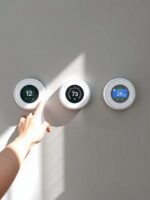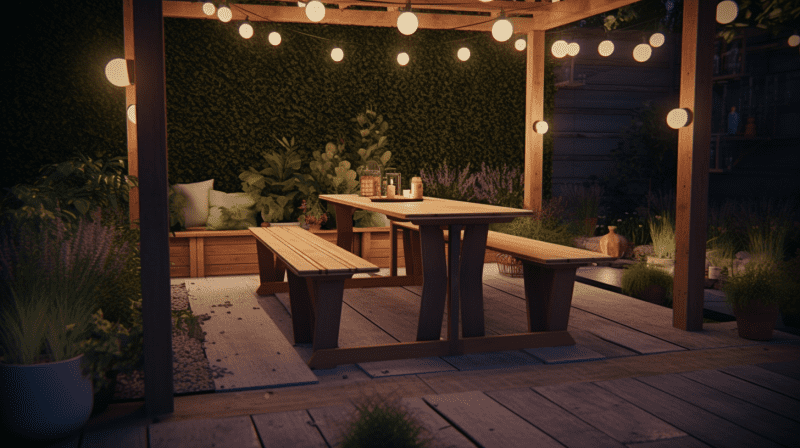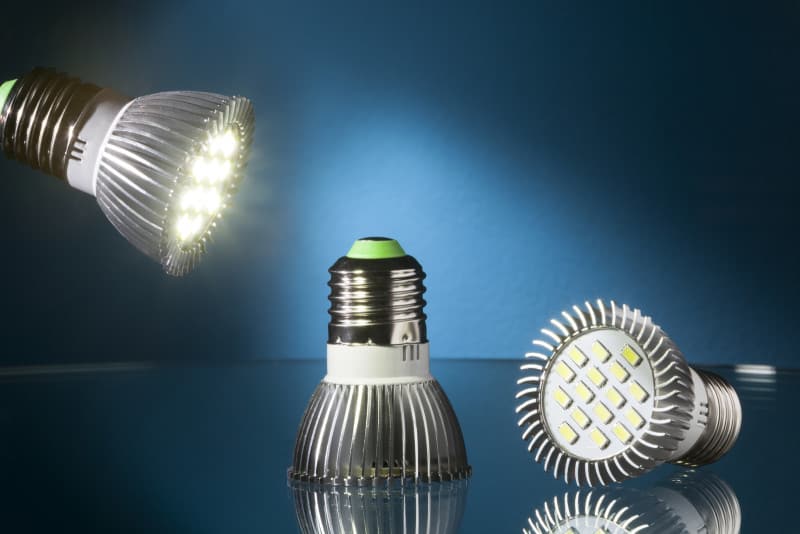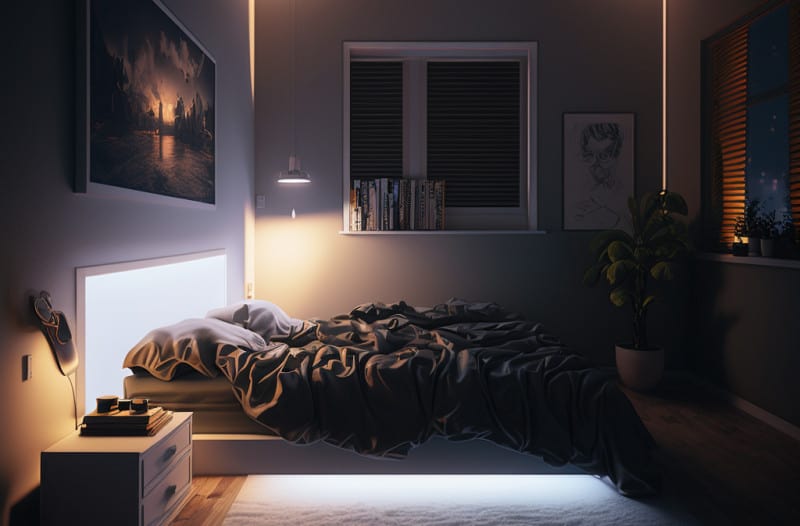In recent years, there has been a growing awareness of the importance of energy conservation and sustainable living.
One simple way to reduce energy consumption and carbon footprint is by switching to LED energy-efficient light bulbs.
But are LED energy efficient lights bulbs worth it, and should you invest in them?
In short, yes, LED light bulbs are absolutely worth it since they’re energy-efficient, have a longer lifespan, can save you money on your electricity bills, and, even more importantly, they’re environmentally friendly.
Many people wonder if the initial cost of LED bulbs is worth the long-term savings on electricity bills.
In this article, we will delve into the world of LED lighting, exploring their benefits, drawbacks, and cost-effectiveness to help you decide whether they are worth the switch.
So, if you’re curious about the benefits of LED energy-efficient light bulbs and whether they are a smart investment for your home or business, keep reading!
Definition of LED Lights
Ah, LED lights!
They may seem like the newest thing in energy efficiency technology, but they’ve actually been around for decades.
LED lights are more than just a passing fad – they’re here to stay.
Let me break down the terminology and explain how this lighting technology works its magic.
LED stands for “light emitting diode,” which is essentially a semiconductor device that converts electricity into light.
They’re one of the most efficient sources of illumination known to man: LEDs last longer than traditional bulbs and use much less power.
The upshot is that when it comes to saving money (and the environment), LED lights really shine (pun intended)!
Advantages of LED Lights
Now that we understand what LED lights are, let’s look at the advantages they offer.
LEDs provide energy savings of up to 80%, making them a great choice for anyone looking to be more eco-friendly or save money on their bills.
These bulbs have a much longer lifespan than traditional incandescent bulbs.
On average, an LED bulb lasts around 25,000 hours, which is about double the life of a typical halogen or incandescent bulb.
This means less frequent replacements and less waste, making them a more sustainable choice.
The low heat output from LED lighting also makes it safer for kids and pets as there is no risk of burning.
LED lights are also incredibly versatile and can be used in a variety of applications, from home lighting and décor to commercial and industrial applications.
They can be customized in terms of shape, color, and brightness, making them perfect for creating the desired atmosphere in any space.
Disadvantages of LED Lights
Despite their numerous benefits, LED lights also have some drawbacks.
One of the main drawbacks is their upfront cost, which can be higher than traditional incandescent or fluorescent bulbs.
This higher cost can be a barrier for many consumers, especially those who are used to paying less for traditional bulbs.
However, it’s worth keeping in mind that LED lights offer long-term cost savings due to their energy efficiency and longer lifespan, which can ultimately offset the initial investment.
Another disadvantage of LED lights is their potential to cause glare and eye strain.
LEDs emit a bright, cool-toned light that can be harsh on the eyes, especially when used in areas where people need to concentrate, such as offices or classrooms.
This can cause discomfort, headaches, and other vision-related issues.
However, newer LED lights are being designed with diffusers and filters to reduce glare and make them more comfortable for extended use.
It’s important to choose LED lights that are labeled as “warm” or “soft” to minimize eye strain.
Cost Analysis
Now that we’ve discussed the pros and cons of LED lights, let’s dive into a cost analysis.
LED bulbs are becoming increasingly affordable and can be found for as little as $2 per bulb.
Although this may seem like an expensive up-front cost compared to incandescent lightbulbs, the energy savings you get from LEDs far outweighs the initial investment within 1–3 years depending on how much they’re used.
LED costs vary widely, but in general they offer greater energy efficiency than other types of lighting at a lower price point over time.
To put it another way, using LED lights aren’t only more eco friendly — they also saves you money!
If you switch out all your existing light fixtures with LEDs, you could potentially save as much as hundreds of dollars each year on electricity bills alone.
Since they last longer than traditional bulbs (upwards of 25,000 hours), replacing them less often can result in further savings down the road.
The bottom line is that investing in LED lights pays off.
Not only do they help protect our environment by reducing greenhouse gas emissions and saving resources such as water and minerals needed for producing conventional lightbulbs, but their long lifespan leads to significant financial gains too.
Ultimately, choosing to upgrade your home or business to LED lighting is one of the smartest decisions you can make when considering efficiency and budgeting.
Alternatives To LED Lights
When it comes to energy efficient lighting, LED bulbs are not the only option.
There are several other choices available that can help you save money on your electric bill and reduce your carbon footprint.
- Fluorescent bulbs: These bulbs use less wattage than traditional incandescent bulbs while providing more light output per watt. They also last longer and have a lower initial cost compared to LEDs.
- Halogen bulbs: Halogen lamps offer bright white light with improved color rendering capabilities over standard incandescents and fluorescents, making them ideal for task lighting applications.
- CFL Bulbs: Compact fluorescent lights (CFLs) use significantly less electricity than incandescent or halogen lamps and come in many sizes, shapes, colors and styles. They emit much less heat which helps keep cooling costs down in summertime months.
- Solar-powered bulbs: Solar powered lightbulbs harness the power of the sun to provide reliable illumination without increasing your electricity bills. Many solar powered lights now come equipped with motion sensors so they will only turn on when needed – saving even more money!
These alternatives to LED Energy Efficient Light Bulbs all have their own advantages and disadvantages depending on personal preferences as well as specific needs such as environment type or application requirements.
For most people though, switching out an old inefficient bulb for one of these options is an easy way to start reducing their impact on the planet while potentially saving some money in the process.
Conclusion
LED energy efficient light bulbs are worth considering if you’re looking to save money while reducing your carbon footprint.
They have their advantages such as a lower upfront cost, long lifespans and greater efficiency than other lighting alternatives.
However, they also come with some drawbacks such as their up-front costs when compared to your standard incandescent bulb.
With due diligence and research, you should be able to determine what type of lighting solution is best for you both financially and environmentally.





